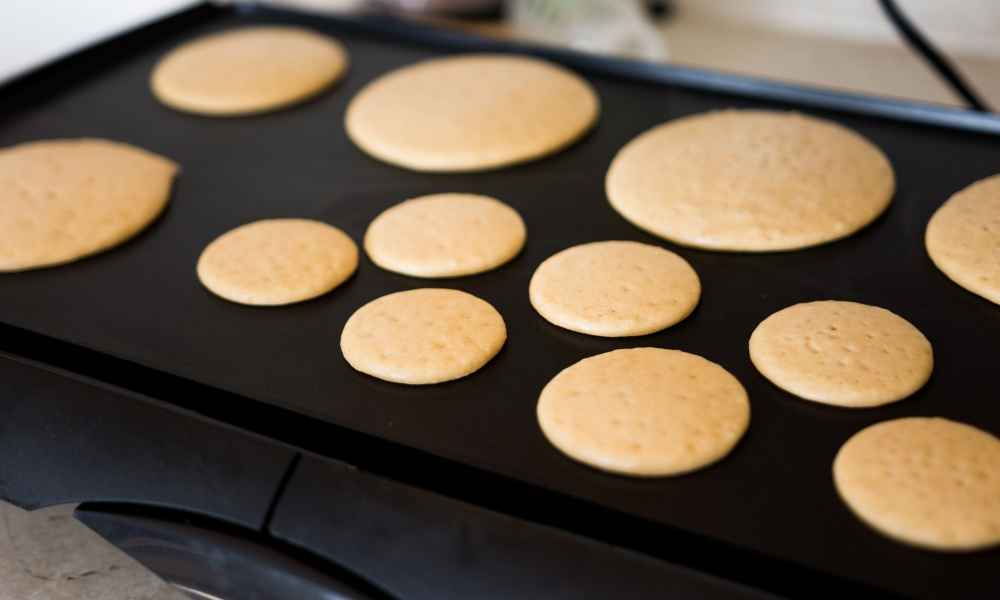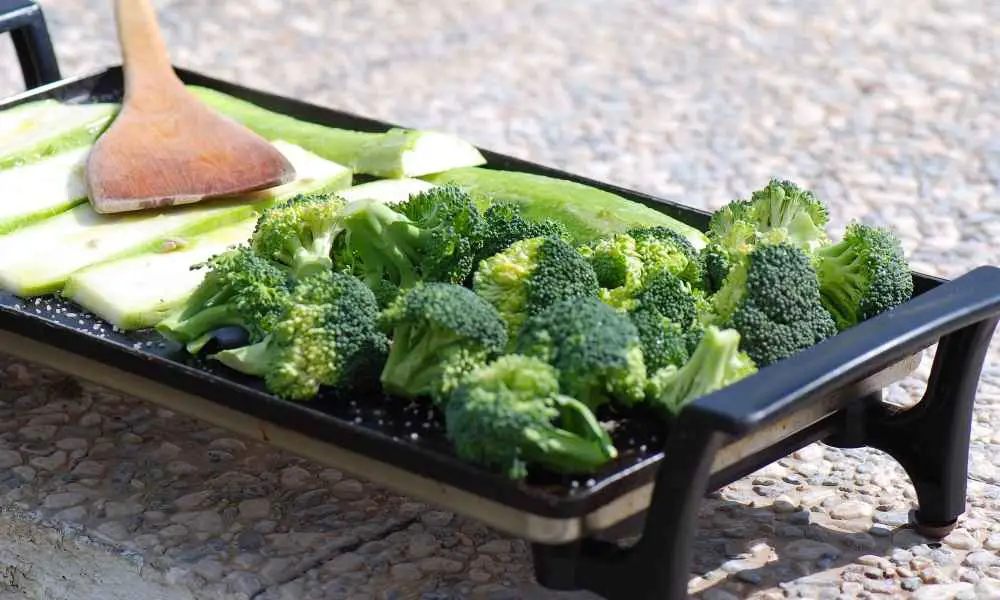If you’re a fan of cooking outdoors, then you’ve probably heard of griddle cooking. Griddle cooking is a versatile and delicious way to cook a variety of foods. Whether you’re cooking breakfast, lunch, or dinner, a griddle can help you create delicious dishes that your family and friends will love.
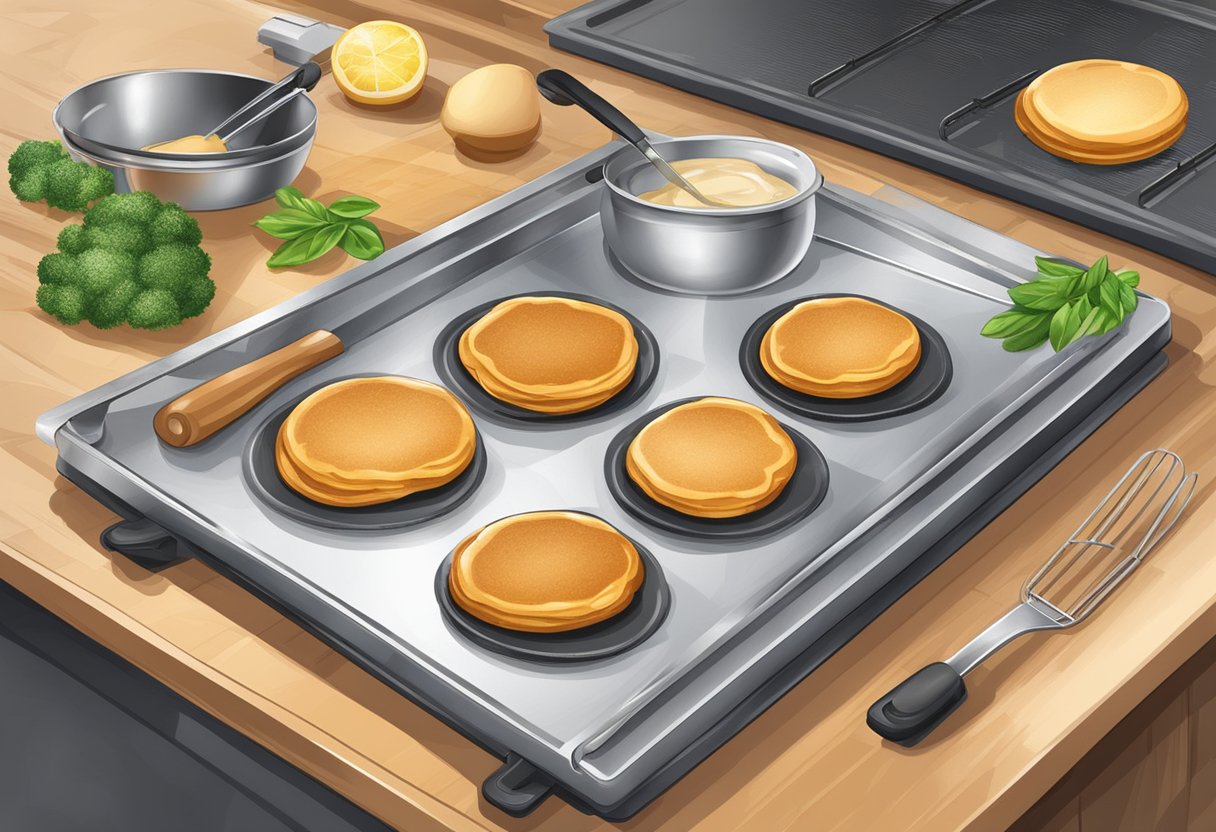
One of the great things about griddle cooking is that it allows you to cook a variety of foods at the same time. You can cook pancakes, eggs, bacon, and sausage all at once on a griddle. You can also cook burgers, hot dogs, and vegetables on a griddle. Griddles are perfect for cooking large meals for a crowd, and they’re also great for cooking smaller meals for your family.
To get the most out of your griddle, it’s important to learn some griddle techniques. There are many different techniques that you can use when cooking on a griddle, such as seasoning your griddle, using the right temperature, and using the right tools. By mastering these techniques, you can create delicious meals that your family and friends will love.
Griddle Basics
https://www.youtube.com/watch?v=0p7VoVw4Jrg&embed=true
When it comes to cooking on a griddle, there are a few basics you should keep in mind. In this section, we’ll cover choosing the right griddle and temperature control.
Choosing the Right Griddle
The first step in mastering griddle cooking is choosing the right griddle. There are a few things to consider when making your selection, such as size, material, and features.
Size is an important factor to consider. If you’re cooking for a large group, you’ll want a griddle that can accommodate all your food. On the other hand, if you’re cooking for just a few people, a smaller griddle may be more practical.
Material is another important consideration. Griddles can be made from a variety of materials, including cast iron, stainless steel, and aluminum. Cast iron is durable and retains heat well, while stainless steel is easy to clean and maintain. Aluminum is lightweight and heats up quickly, but may not be as durable as other materials.
Finally, consider the features you want in your griddle. Some griddles come with built-in temperature control, while others require you to use an external thermometer. Some griddles also come with a built-in grease trap or griddle cover.
Temperature Control
Temperature control is key to successful griddle cooking. You want to make sure your griddle is at the right temperature for the food you’re cooking.
One way to ensure accurate temperature control is to use an infrared thermometer. This will allow you to measure the surface temperature of your griddle and adjust the heat accordingly.
Another way to control temperature is to use the heat zones on your griddle. Most griddles have different heat zones, which allow you to cook different foods at different temperatures. For example, you may want to cook your bacon on a hotter zone while your eggs cook on a cooler zone.
In general, you want your griddle to be between 350 and 400 degrees Fahrenheit for most foods. However, some foods, such as pancakes, may require a lower temperature.
By choosing the right griddle and mastering temperature control, you’ll be well on your way to becoming a griddle cooking pro.
Preparation Techniques
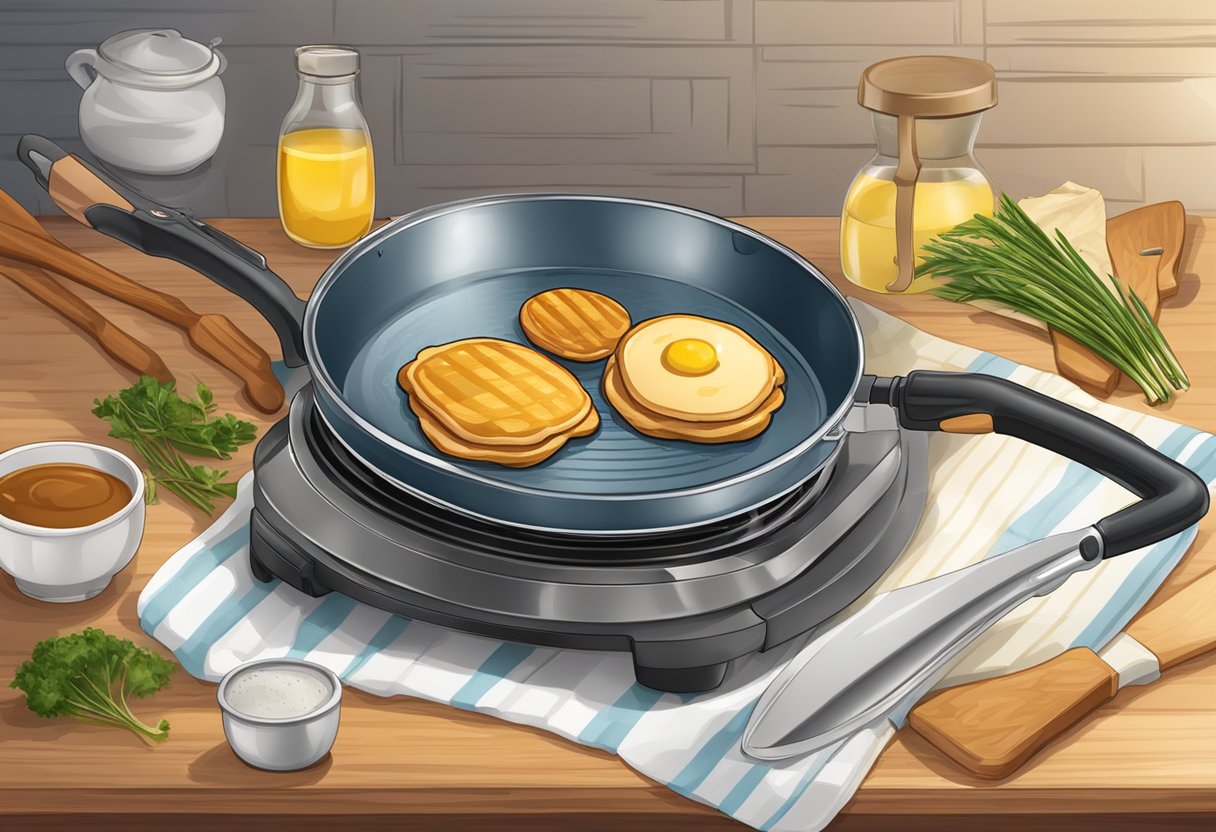
Before you start cooking on your griddle, there are a few preparation techniques you should follow to ensure the best results. In this section, we’ll cover preheating the griddle and greasing the griddle.
Preheating the Griddle
Preheating your griddle is essential for optimal cooking. It allows the griddle to reach the desired temperature, ensuring that your food cooks evenly and doesn’t stick to the surface. To preheat your griddle, follow these steps:
- Turn on your griddle and set it to the desired temperature. Refer to the manufacturer’s instructions for the recommended temperature setting.
- Allow the griddle to heat up for 10-15 minutes.
- Use an infrared thermometer to check the temperature of the griddle surface. The temperature should match the desired temperature setting.
Greasing the Griddle
Greasing the griddle is important to prevent food from sticking to the surface. Here are some tips for greasing your griddle:
- Use a high smoke point oil such as canola, vegetable, or peanut oil. Avoid using butter or low smoke point oils as they will burn and smoke.
- Apply a thin layer of oil to the griddle surface using a brush or paper towel. Be careful not to use too much oil as it can cause flare-ups and smoke.
- Allow the oil to heat up for a few seconds before adding food to the griddle.
By following these preparation techniques, you’ll be able to achieve the best results when cooking on your griddle. Preheating the griddle and greasing the surface will ensure that your food cooks evenly and doesn’t stick to the surface.
Cooking Techniques
https://www.youtube.com/watch?v=GEYU7U7Y8J0&embed=true
When it comes to cooking on a griddle, there are a few techniques that can help you achieve the perfect result. Here are some tips to help you get started.
Flipping and Turning
One of the most important techniques when cooking on a griddle is flipping and turning your food. You want to make sure that your food is evenly cooked on both sides. To do this, use a spatula to flip your food over when it is halfway cooked. This will ensure that both sides are cooked evenly.
When flipping your food, be gentle. Use a spatula to lift the food off the griddle and then flip it over. Avoid using tongs, as they can pierce the food and cause it to lose its juices.
Timing and Temperature
Timing and temperature are also important when cooking on a griddle. Make sure that your griddle is preheated to the correct temperature before you start cooking. This will ensure that your food cooks evenly and doesn’t stick to the surface.
Different foods require different cooking times and temperatures. For example, pancakes should be cooked at a lower temperature than burgers. Refer to the recipe or cooking instructions for the specific food you are cooking to determine the correct temperature and cooking time.
It’s also important to keep an eye on your food while it’s cooking. Don’t walk away from the griddle, as this can cause your food to burn or overcook. If you need to step away, set a timer to remind you to check on your food.
By following these techniques, you’ll be able to cook delicious meals on your griddle every time.
Advanced Techniques
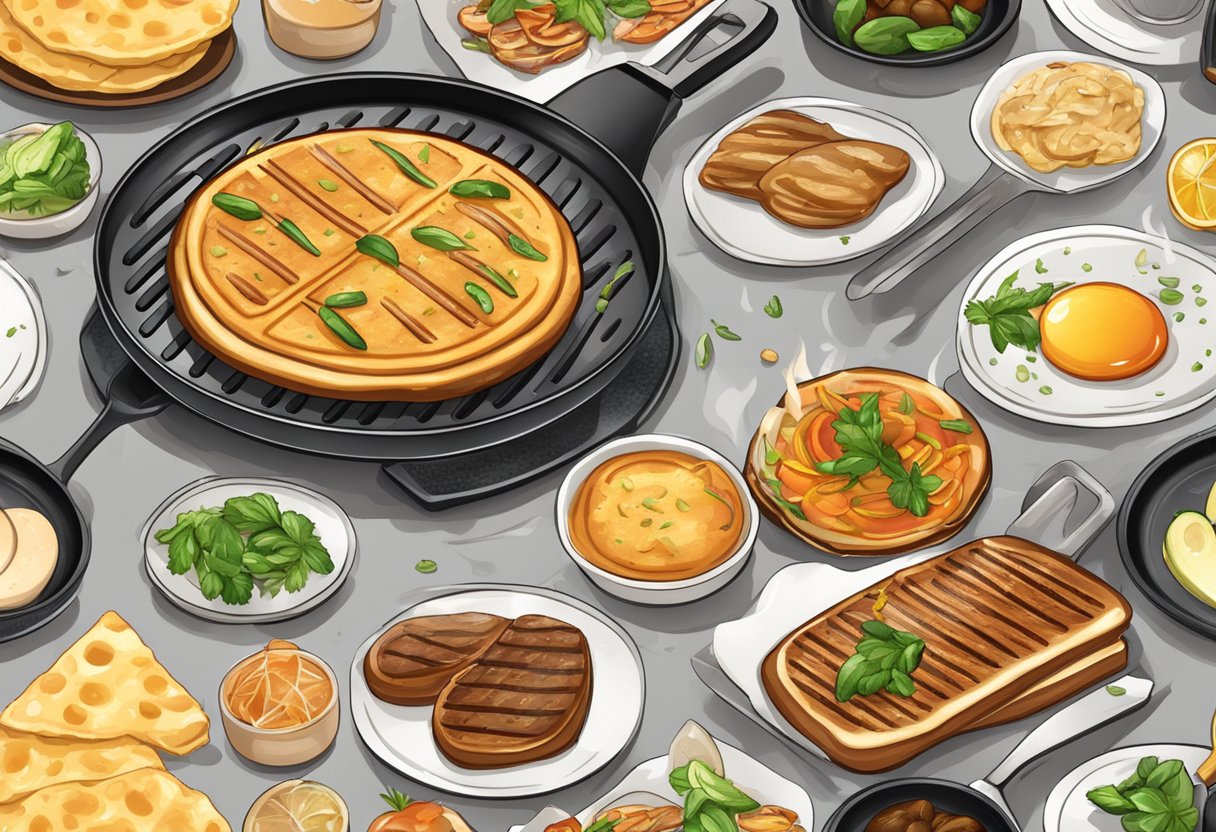
If you’re a griddle master and want to take your skills to the next level, try out these advanced techniques.
Using a Dome Cover
A dome cover can be a game-changer when it comes to griddle cooking. It traps in heat and steam, helping to cook food faster and more evenly. Here’s how to use it:
- Preheat your griddle to the desired temperature.
- Place your food on the griddle and let it cook for a few minutes.
- Place the dome cover over the food, making sure it’s sealed tightly to trap in the heat and steam.
- Cook for the remaining time specified in your recipe.
- Remove the dome cover and enjoy your perfectly cooked meal.
Creating Grill Marks
Grill marks can add a touch of visual appeal to your griddle-cooked food. Here’s how to create them:
- Preheat your griddle to a high temperature.
- Place your food on the griddle and let it cook for a few minutes.
- Use a spatula to rotate the food 90 degrees.
- Cook for another few minutes.
- Use the spatula to flip the food over and repeat the process on the other side.
- Remove the food from the griddle and enjoy your beautiful grill marks.
Remember, these techniques take practice to perfect, so don’t be discouraged if your first attempts don’t turn out exactly how you want them to. Keep trying and experimenting to find what works best for you and your griddle.
Cleaning and Maintenance
https://www.youtube.com/watch?v=iuDLDuoGso4&embed=true
Keeping your griddle clean and well-maintained is crucial to ensuring that it lasts a long time and cooks your food perfectly every time. Here are some tips on how to keep your griddle in top condition.
Post-Cooking Cleaning
After you’ve finished cooking, it’s important to clean your griddle thoroughly. Here are the steps you should follow:
- Scrape off any food residue with a grill brush or scraper. Be sure to remove any large pieces of food that may have stuck to the surface.
- Wipe the surface clean with a damp cloth and mild detergent. This will help remove any remaining food debris.
- Rinse the griddle thoroughly with water to remove any soap residue.
- Dry the surface with a clean towel or paper towel.
It’s important to clean your griddle after each use to prevent the buildup of grease and food debris. This will help ensure that your griddle cooks your food evenly and prevents any unwanted flavors from seeping into your food.
Periodic Maintenance
In addition to cleaning your griddle after each use, it’s important to perform periodic maintenance to keep it in top condition. Here are some tips on how to maintain your griddle:
- Check the burner tubes regularly and replace any clogged or damaged ones to ensure proper gas flow.
- Clean the surface of the griddle with a mixture of mild soap and water at the end of every day.
- Polish the unit’s front and empty the waste drawer.
- Avoid using harsh chemicals or abrasive cleaners on your griddle, as they can damage the surface.
- If your griddle has a grease trap, be sure to empty it regularly to prevent overflow.
By following these simple cleaning and maintenance tips, you can keep your griddle in top condition and ensure that it cooks your food perfectly every time. Remember to clean your griddle after each use and perform periodic maintenance to keep it in top condition.
Troubleshooting Common Issues
https://www.youtube.com/watch?v=99XoRcVNGgQ&embed=true
Griddles are a great way to cook a variety of foods, but they can sometimes present problems. Here are some common issues you might encounter while using your griddle and how to troubleshoot them.
Uneven Cooking
If your griddle is not heating evenly, it can lead to uneven cooking and burnt or undercooked food. Here are some possible reasons for uneven heating and how to fix them:
- Uneven heating element: Check to make sure that the heating element is level and in good condition. If it is damaged or warped, it may need to be replaced.
- Uneven distribution of oil: If you are using oil to cook, make sure it is evenly distributed across the surface of the griddle. Use a paper towel or brush to spread the oil evenly.
- Uneven placement of food: Make sure that you are placing food evenly across the surface of the griddle. If you are cooking multiple items at once, try to space them out evenly.
Sticking Food
Sticking food can be frustrating and can ruin the appearance and taste of your dish. Here are some tips for preventing food from sticking to your griddle:
- Preheat your griddle: Make sure your griddle is fully preheated before adding any food. This will help prevent food from sticking.
- Oil your griddle: Use a high smoke point oil like canola or vegetable oil to coat the surface of the griddle before adding any food. This will help prevent sticking.
- Use a spatula: Use a metal spatula to flip and move food around on the griddle. This will help prevent food from sticking to the surface.
- Avoid overcrowding: Overcrowding the griddle can cause food to stick together. Try to space out food evenly across the surface of the griddle to prevent sticking.
Remember, troubleshooting common issues with your griddle can help you get the most out of your cooking experience. By following these tips, you can ensure that your griddle is working properly and that your food is cooked to perfection.
Frequently Asked Questions
https://www.youtube.com/watch?v=SKg5AujP2cI&embed=true
What are some easy flat top grill recipes?
If you’re new to cooking on a flat top grill, there are plenty of easy recipes to get you started. Some popular options include pancakes, bacon, burgers, and stir-fry dishes. You can also try cooking vegetables and seafood, such as shrimp and scallops, on your flat top grill.
How do I cook on a Blackstone griddle for the first time?
Before you start cooking on your Blackstone griddle, it’s important to season it properly. This will help prevent rust and ensure that your food doesn’t stick to the surface. To season your griddle, heat it up on high heat and add a thin layer of oil. Let the oil heat up for a few minutes, then wipe it off with a paper towel. Repeat this process a few times until your griddle is well-seasoned.
What accessories can I use with my outdoor griddle?
There are many accessories you can use with your outdoor griddle to enhance your cooking experience. Some popular options include spatulas, scrapers, and grill covers. You can also use a griddle press to create perfectly cooked burgers and sandwiches.
What’s the difference between a griddle pan and a flat top grill?
A griddle pan is a stovetop pan with a flat surface that is used for cooking a variety of foods. A flat top grill, on the other hand, is a large, outdoor cooking surface that is heated with propane or natural gas. While both can be used for cooking similar foods, a flat top grill is typically larger and more versatile.
Should I use butter or oil when cooking on a griddle?
When cooking on a griddle, it’s best to use an oil with a high smoke point, such as canola or vegetable oil. This will help prevent the oil from burning and smoking. While butter can be used for flavor, it has a lower smoke point and may burn if used for high-heat cooking.
What can’t be cooked on a griddle?
While a griddle can be used to cook a wide variety of foods, there are some things that are best avoided. For example, delicate foods such as fish and eggs may stick to the surface of the griddle and be difficult to flip. Additionally, foods that require a lot of space, such as whole chickens or large cuts of meat, may not fit on a griddle.

